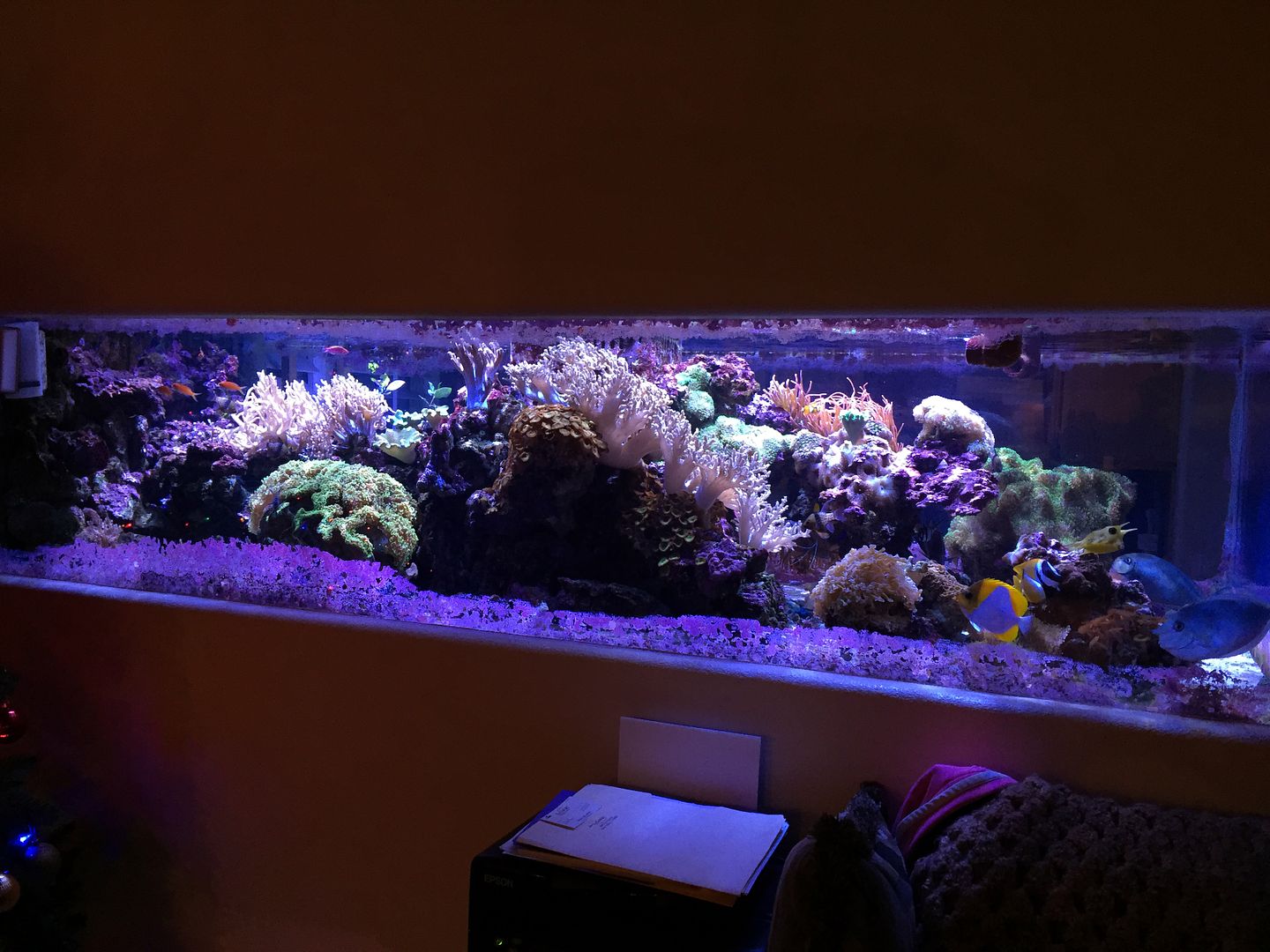MxReEfEr92
MASVC President
Looks like I gotta stop by!
:beer:
It was long over due..
This is a picture from December 15th.. I had been working on it almost daily since then so it wasn't as bad as it was in this photo but there was still a couple inches of coraline along the bottom edge and about an inch along the top..

This was taken last night after we finished. No more coraline on any the viewing panes. I'm looking forward to seeing it later today when I get home from work. Everything should be back to normal although I can see from my web cam that as of now, my big RBTA is hanging out on the other side of the peninsula. Not a big thing as he just extends over to that side. He's done it before and always goes back to his normal side. He got bumped last night during the cleaning so I was kind of expecting him to be on the other side.

I see a small spot a little to the left of the upper corner. :lol2::lol2::lol2:

Interesting. I wonder what it may have deposited in the tank and if it will hurt anything.
Looks really good though!
It looks much better. Metal scraper and no scratch on acrylic? Your friend must be a pro.
What grit did you start off with and what did you finish it off with?
I have also used a metal scraper on my acrylic tacks for over 20 yrs... I only need it for 'hard to remove' coralline ... Besides being 'very careful', I believe the secret is that I have removed the sharp 90* corner edges, rounding them off with my Dremel... This has even worked with razor blades
Jim and I have been discussing a new LA Fish Guys series that would include me. This would different from his regular series as this would focus on different technology whether it be controllers and their abilities, ATO's, Automatic Water Changes, Lighting technology, reviews and how to's. It would be more educational compared to his (more or less) reality based series. Since he is a bit old school, we will make for an interesting combination. Old school vs new school. Good cop, bad cop. It may be called LA Fish Guys Tech Talk or something like that. We are still debating that. This scratch removal process could be one of the first episodes of this new series.
Any how, I thought I would provide an update as I am really happy with the results.
Jim old school? A bit of an understatement!Any way you could get Jim to pronounce debris correctly? Every time I hear 'deb-breeze' I cringe.
Looking forward to your new LAFG episodes!
You have inspired me to take care of a few small scratches I have. They are very light scratches (tank is 'new' - 1.5 yrs) that are only noticed by me when I clean. Every time I clean I get mad at myself for making those scratches.
I'm also going to experiment with the metal scrapper. I've got an old FW tank that will be fine if I screw it up big time.
I didn't see it mentioned, but did you alternate the direction of sanding (up/down, left/right) with each grit change?
That's what has worked for me...














